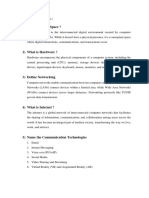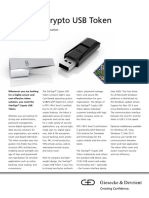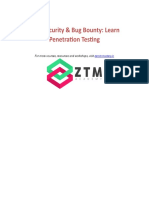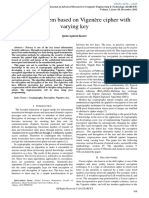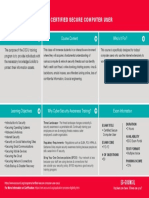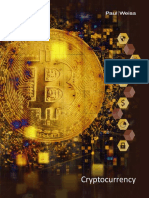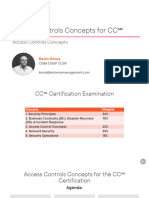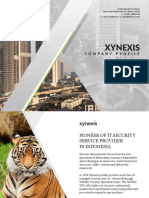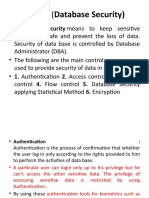Cyber Security Assignment Answers
1. Cyberspace refers to the virtual environment of interconnected digital technologies, primarily involving the
internet, networks, computers, and software systems. It includes all forms of digital communication and
information exchange.
2. Key components include hardware (servers, routers), software (OS, browsers), networks (LAN, WAN),
protocols (TCP/IP), and data.
3. Communication technologies enable interaction via email, social media, VoIP, etc., enabling real-time data
exchange.
4. Internet is the global network of computers. The World Wide Web is a service on the internet that uses
browsers and hyperlinks.
5. Elements include physical infrastructure, IP addressing, DNS, IXPs, and governance bodies like ICANN.
6. Internet governance is technical/policy coordination; cyberspace regulation includes laws, enforcement,
and rights protection.
7. The Internet society shapes communication, commerce, education, and entertainment, influencing daily life
and culture.
8. Mechanisms include cyber laws, international regulations, and data protection policies to ensure safe
digital interactions.
9. Cybersecurity protects systems and data from threats. Its goals are confidentiality, integrity, and
availability.
10. Cybersecurity prevents identity theft, fraud, and data loss, ensuring safe online interactions and
infrastructure protection.
11. Issues: frequent attacks, APTs, lack of awareness, skills shortage, and evolving threats.
12. Categories: hacking, malware, phishing, identity theft, cyberstalking, and data breaches.
13. Methods: phishing emails, exploit kits, fake software, malicious links, and RDP exploits.
14. Attacks: phishing, vishing, smishing, pretexting, baiting-each manipulates human behavior to gain access.
Page 1
� Cyber Security Assignment Answers
15. Zero Day: unknown vulnerability exploited. Zero Click: no user action required. Both are stealthy and
dangerous.
16. Steps: collect evidence, file complaint at cybercrime.gov.in, visit police, file FIR, cooperate in
investigation.
17. Methods: spoofed emails, infected attachments, exploit vulnerabilities, use cryptocurrency for ransom.
18. Offenses under IT Act: hacking, identity theft, cyber terrorism, obscene content-penalties include
imprisonment and fines.
19. Agencies: CERT-In, MeitY, NCIIPC, DRDO, DSCI, Cyber Crime Cell, C-DAC, NASSCOM.
20. Checklist: written complaint, ID proof, evidence, contact/device info, FIR copy, online complaint ref.
21. Social networks focus on user connections and interactions, unlike e-commerce or forums.
22. Types: networking (FB), microblogging (X), photo/video (Instagram), professional (LinkedIn), forums
(Reddit).
23. Features vary by platform (media type, length, audience, purpose).
24. Monitoring tracks mentions, trends, feedback for brand reputation and customer engagement.
25. Hashtags group topics, increase reach, and facilitate discovery.
26. Viral content spreads fast due to emotional impact, simplicity, timing, and influencer sharing.
27. A hashtag (#) categorizes content and aids discoverability.
28. Social media marketing increases visibility via engagement, ads, and brand storytelling.
29. Concerns: data misuse, tracking, identity theft. Protect via strong settings, passwords, and limited
sharing.
30. Challenges: algorithms, competition, feedback. Opportunities: wide reach, low cost, direct engagement.
31. E-Commerce is online buying/selling. It enables global reach, reduces costs, and streamlines business.
32. Components: website, catalog, cart, payment gateway, logistics, customer support.
Page 2
� Cyber Security Assignment Answers
33. Security elements: encryption, authentication, fraud detection, secure payments, audits.
34. Digital payment enables quick and secure E-Commerce transactions.
35. Stakeholders: consumers, merchants, payment gateways, banks, regulators.
36. Modes: cards, UPI, wallets, AEPS, USSD.
37. Frauds: phishing, fake apps, QR scams. Prevent with verification and 2FA.
38. Endpoint security protects user devices from breaches and is key for data integrity.
39. Firewalls block unauthorized traffic; antivirus removes malware. Together they ensure protection.
40. Backups restore lost data after attacks. Best practices: automation, encryption, off-site storage.
41. Precautions: use trusted sources, verify apps, avoid pirated software, scan files.
42. Device security policy defines rules for secure usage, reducing risk of breaches.
43. Best practices: strong passwords, 2FA, updates, training, antivirus, backups.
44. Firewalls control traffic; antivirus stops malware. Combined, they provide robust defense.
45. Wi-Fi security: WPA3/WPA2, strong password, hide SSID, firmware updates, MAC filtering.
Page 3






